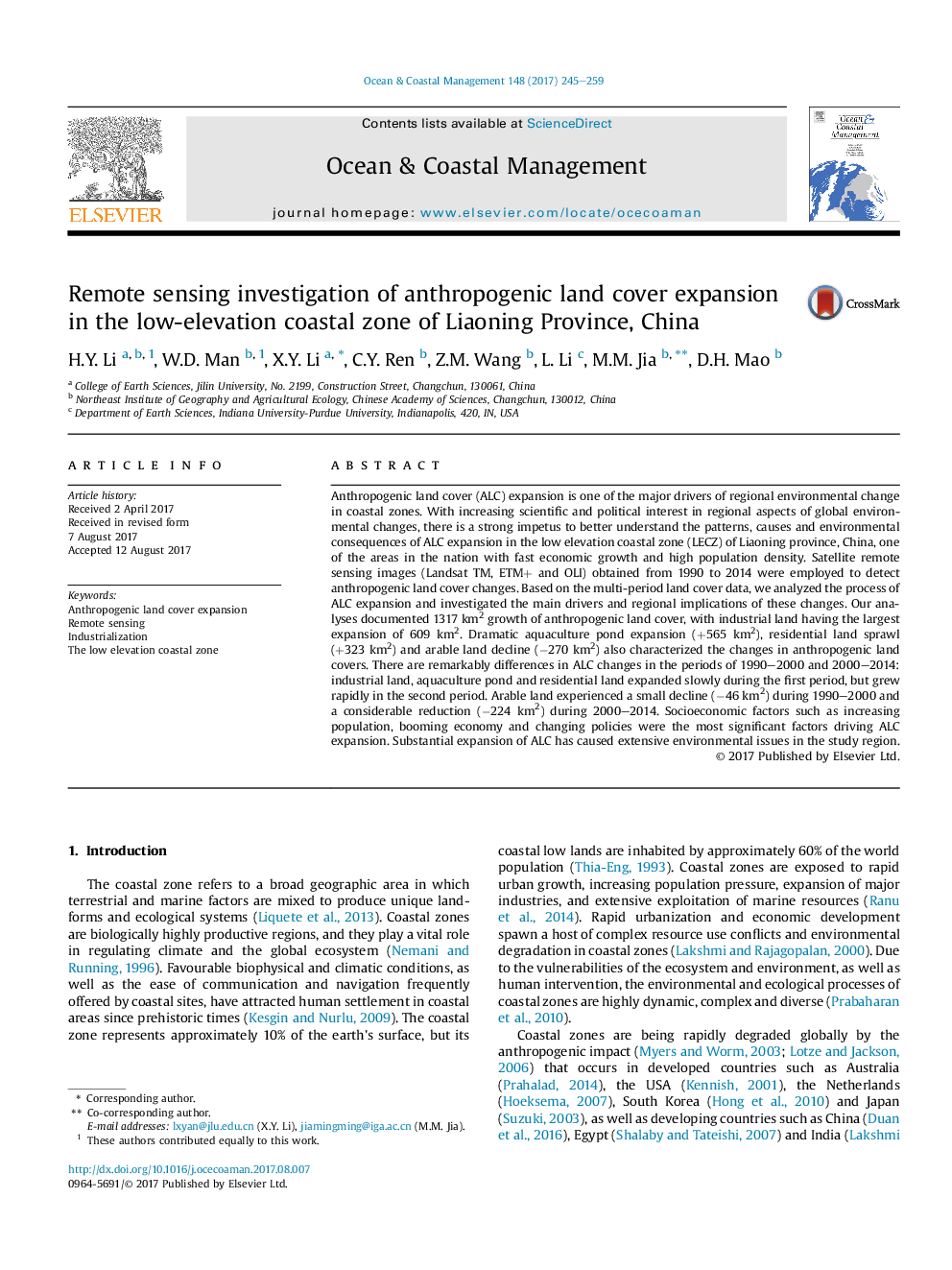| Article ID | Journal | Published Year | Pages | File Type |
|---|---|---|---|---|
| 5473858 | Ocean & Coastal Management | 2017 | 15 Pages |
Abstract
Anthropogenic land cover (ALC) expansion is one of the major drivers of regional environmental change in coastal zones. With increasing scientific and political interest in regional aspects of global environmental changes, there is a strong impetus to better understand the patterns, causes and environmental consequences of ALC expansion in the low elevation coastal zone (LECZ) of Liaoning province, China, one of the areas in the nation with fast economic growth and high population density. Satellite remote sensing images (Landsat TM, ETM+ and OLI) obtained from 1990 to 2014 were employed to detect anthropogenic land cover changes. Based on the multi-period land cover data, we analyzed the process of ALC expansion and investigated the main drivers and regional implications of these changes. Our analyses documented 1317Â km2 growth of anthropogenic land cover, with industrial land having the largest expansion of 609Â km2. Dramatic aquaculture pond expansion (+565Â km2), residential land sprawl (+323Â km2) and arable land decline (â270Â km2) also characterized the changes in anthropogenic land covers. There are remarkably differences in ALC changes in the periods of 1990-2000 and 2000-2014: industrial land, aquaculture pond and residential land expanded slowly during the first period, but grew rapidly in the second period. Arable land experienced a small decline (â46Â km2) during 1990-2000 and a considerable reduction (â224Â km2) during 2000-2014. Socioeconomic factors such as increasing population, booming economy and changing policies were the most significant factors driving ALC expansion. Substantial expansion of ALC has caused extensive environmental issues in the study region.
Keywords
Related Topics
Physical Sciences and Engineering
Earth and Planetary Sciences
Oceanography
Authors
H.Y. Li, W.D. Man, X.Y. Li, C.Y. Ren, Z.M. Wang, L. Li, M.M. Jia, D.H. Mao,
